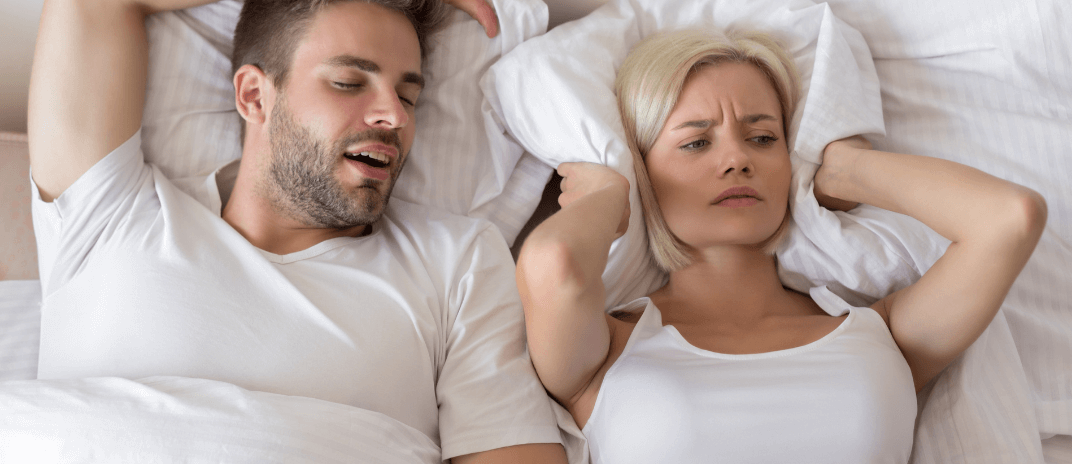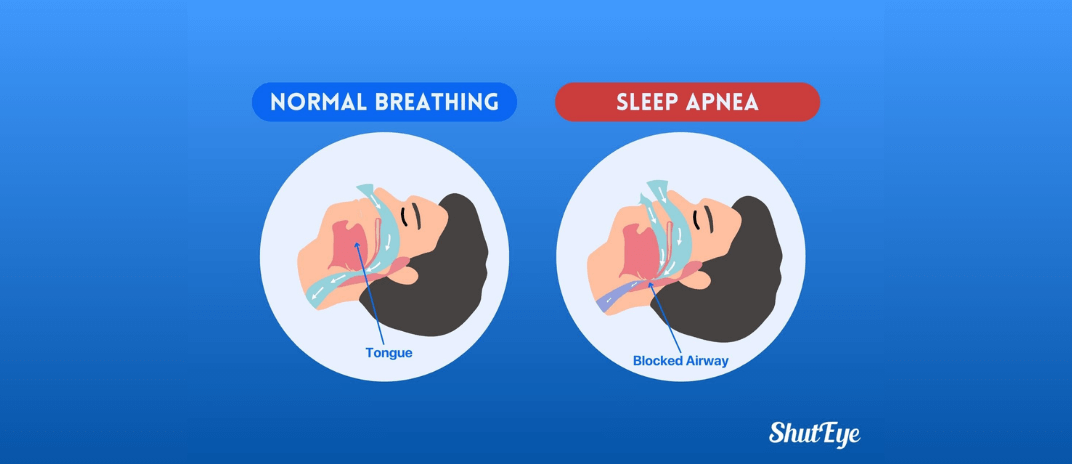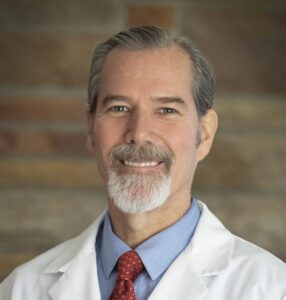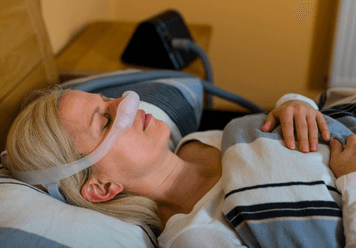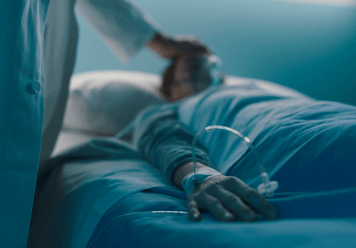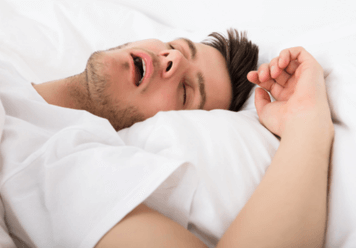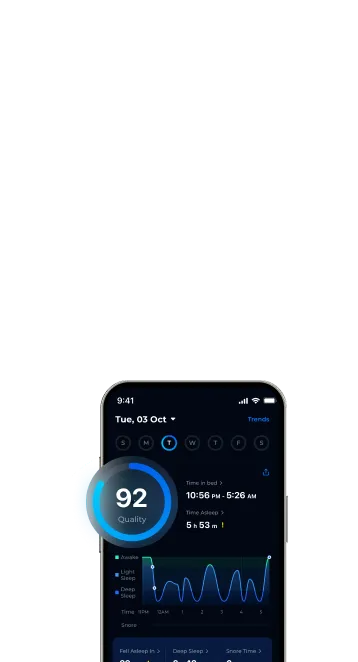Sleep apnea is a sleep disorder where individuals experience obstruction in breathing (apnea) during sleep. The most common type of apnea is obstructive sleep apnea (OSA). It is characterized by snoring, obstruction in breathing daytime drowsiness, and recurrent collapse. 936 million people worldwide are estimated to suffer from obstructive sleep apnea.
Sleep Apnea: Definition and Types
Sleep apnea is a common disorder causing the breathing to pause or become very shallow. These breathing pauses can last from a few seconds to minutes and might occur over 30 times an hour. People with sleep apnea may experience interruptions in sleep with frequent awakenings and loud snoring. Interrupted and poor-quality sleep can lead to daytime drowsiness and fatigue. Individuals with sleep apnea often snore loudly. There are two types of sleep apnea, obstructive sleep apnea and central sleep apnea.
Obstructive Sleep Apnea
Obstructive sleep apnea is the most common type of apnea. It is a condition in which individuals experience obstruction in breathing (apnea) during sleep. Obstructive sleep apnea occurs due to partial or complete throat closure (per airway). Complete closure can lead to apnea, while partial closure allows breathing but reduces the oxygen intake (hypopnea).
Central Sleep Apnea
Central sleep apnea (CSA) is another type of sleep apnea characterized by pauses in breathing during sleep. It occurs because the brain fails to send the appropriate signals to the muscles that control breathing. Unlike obstructive sleep apnea, where the airway is physically blocked, in central sleep apnea, the issue originates in the central nervous system. This can happen due to conditions such as heart failure, stroke, or because of certain medications.
Sleep Apnea: Prevalence and Statistics
- The prevalence of obstructive sleep apnea (OSA) is highest among obese middle-aged individuals.
- Research suggests that men are more susceptible to experiencing obstructive sleep apnea (OSA) than women.
- Globally, nearly one billion individuals are affected by obstructive sleep apnea, with some countries reporting rates as high as 50%.
- In the USA, around 39 million adults suffer from obstructive sleep apnea.
- Snoring is the primary indicator, observed in 94% of patients.
Symptoms Of Sleep Apnea
Common symptoms for both types of sleep apnea include loud snoring, frequent awakenings during sleep, gasping or choking sounds, and excessive daytime sleepiness. However, each type of sleep apnea also presents specific symptoms, which we recommend you verify below. If you experience any of these symptoms, it’s important to find a sleep clinic for evaluation and diagnosis.
Symptoms of Obstructive Sleep Apnea
- Loud, persistent snoring
- Pauses in breathing during sleep, often observed by a bed partner
- Gasping or choking sensations during sleep
- Frequent awakenings throughout the night
- Morning headaches
- Dry mouth or sore throat upon waking
- Daytime fatigue and sleepiness
- Difficulty concentrating
- Irritability and mood changes
- Decreased libido or sexual dysfunction
Symptoms of Central Sleep Apnea
- Episodes of breathing interruptions during sleep
- Abrupt awakenings with shortness of breath
- Difficulty maintaining restful sleep
- Noisy breathing or snoring may be absent
- Excessive daytime sleepiness
- Morning headaches
- Difficulty concentrating or memory problems
- Fatigue and general weakness
- Associated with underlying medical conditions such as heart failure or neurological disorders
Related content:
Understanding Sleep Apnea: Symptoms and Treatment
Common Causes
Recognizing the common causes of sleep apnea is crucial for initiating effective treatment. As there are two different types of sleep apnea, both have distinct underlying causes.
Causes of Obstructive Sleep Apnea
The causes of obstructive sleep apnea are often complicated. Moreover, the apnea and hypopnea symptoms can worsen after the apnea person falls asleep.
- This condition originates from a combination of genetic (family history), health (hormone conditions), and lifestyle factors (cigarette smoking, and alcohol consumption).
- Obesity is a major risk factor for obstructive sleep apnea, as 60-70% of individuals with this OSA are obese.
- Many studies reveal that excess fatty tissue in the head and neck constricts airways, causing apnea.
- Similarly, abdominal fat may prevent the chest and lungs from fully expanding and relaxing.
- risk factors for obstructive sleep apnea include alcohol consumption, frequent nasal congestion, airway blockages, and enlarged tonsils.
Causes of Central Sleep Apnea
The causes of central sleep apnea (CSA) are diverse, mainly involving issues with the brain’s control of breathing.
- Medical conditions like heart failure, stroke, or neurological disorders disrupt the brain’s signals, leading to breathing pauses during sleep.
- Certain medications (opioid drugs or strong medicines)
- High-altitude exposure
- Age, as older people (those over 65 years old), they are at a higher risk of experiencing breathing disruptions.
- Conditions like Cheyne-Stokes respiration or idiopathic CSA.
Diagnosis
Physicians specialized in sleep medicine diagnose apnea by investigating the following factors:
- Choking or gasping during sleep
- Recurrent awakenings from sleep during the night
- Unrefreshing sleep
- Daytime fatigue and drowsiness
- Impaired concentration
Overnight monitoring by various studies demonstrates five or more obstructed breathing events per hour during sleep.
Physical Exam
During a physical exam for sleep apnea, doctors may assess different factors related to the sleep apnea. This can include examining the upper airway for signs of obstruction or abnormalities, such as enlarged tonsils or nasal congestion. Physicians may also evaluate factors like neck circumference, as increased neck size can be associated with a higher risk of sleep apnea.
These physical assessments, along with a thorough medical history, help clinicians in diagnosing and managing sleep apnea effectively.
At-Home Sleep Apnea Diagnosis
An at-home sleep apnea test offers convenience for people suspected of having sleep apnea. Innovative tools and sleep apnea apps like the ShutEye® app allow users to monitor their sleep patterns and detect signs of sleep apnea. Users can track factors such as snoring, sleep duration, and nighttime awakenings, providing valuable data for initial assessment. Subsequently, this data can be shared with a sleep specialist for further analysis and interpretation.
While at-home tools can offer insights, a clinical evaluation by a sleep doctor is essential for an accurate diagnosis of sleep apnea.
Clinical Sleep Study
A clinical sleep study, in a sleep clinic or laboratory, provides the most accurate diagnosis of sleep apnea. Polysomnography, the primary tool used in these studies, involves monitoring various physiological parameters during sleep. This evaluation includes measurements such as airflow, breathing effort, oxygen levels, heart rate, and brain activity. By analyzing these data, sleep doctors can identify and quantify episodes of apnea and hypopnea and assess the overall sleep quality.
Treatment
Treatments for Obstructive Sleep Apnea
Treatment helps keep snoring individual’s airway open during sleep so their breathing does not stop.
- Lifestyle modifications may help relieve symptoms in people with mild sleep apnea. These changes include:
- Avoiding alcohol or medicines that make apnea individual drowsy before bedtime or make symptoms worse.
- Changing sleep position to avoid sleeping on the back.
- Losing excess weight is vital to relieve apnea symptoms.
- Choosing the right pillow for sleep apnea to avoid snoring.
- Continuous Positive Airway Pressure (CPAP) devices best treat obstructive sleep apnea in most individuals. It takes time to get used to sleeping with CPAP machine. However, good follow-up and support from a sleep center can help apnea individual overcome any issues in using CPAP.
- Dental devices may keep the mouth open during sleep by letting the jaws forward and the airways open.
- Surgery is an option for some individuals. However, it is often a last resort if other treatments do not work and an individual has severe symptoms. Surgery may not completely cure obstructive sleep apnea and may have long-term side effects.
Treatments for Central Sleep Apnea
- Treating underlying conditions, such as heart failure or neurological disorders.
- Adaptive servo-ventilation (ASV) therapy to help stabilize breathing.
- Oxygen therapy helps improving blood oxygen levels and alleviating symptoms.
- Some medications, such as acetazolamide or opioids, may help stimulate breathing or improve respiratory control.
- Lifestyle modifications, such as weight loss and avoiding alcohol before sleep, can reduce symptoms.
- Positive airway pressure (PAP) therapy.
Related content:
The Best CPAP Masks for Sleep Apnea Relief
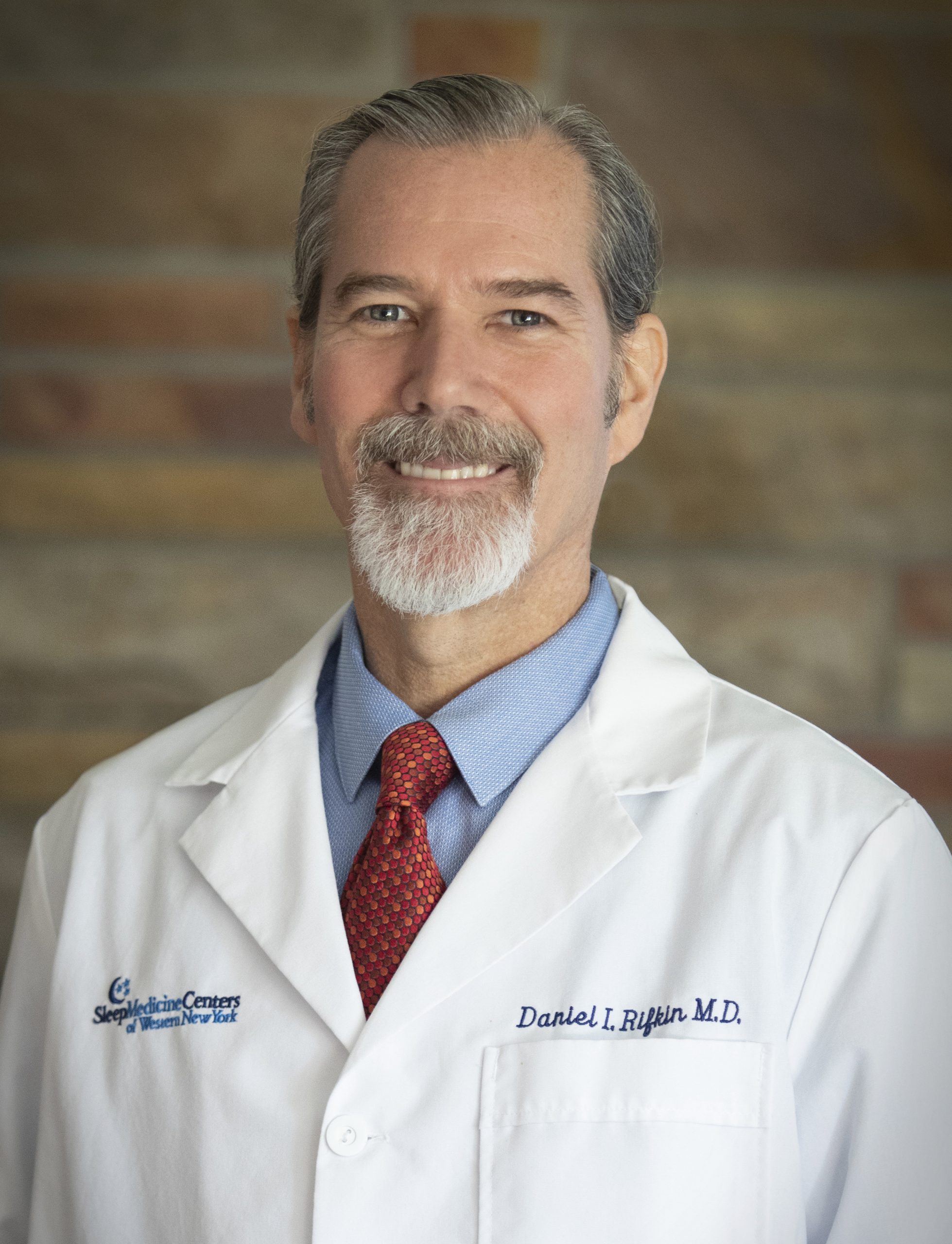
Prevention
There is no direct method for preventing apnea. However, daily life management methods like weight control and active treatment of inflammatory diseases of the upper airway can help prevent its severity.
Tips For Sleep Apnea Patients
The apnea individuals can intervene by taking the following precautionary measures:
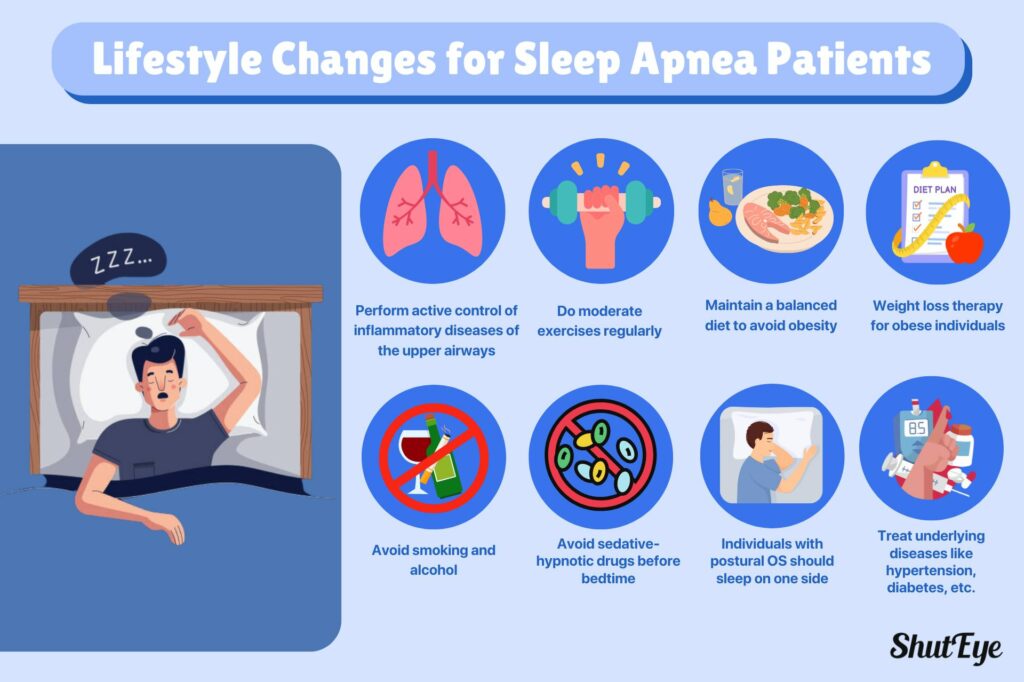
Lifestyle changes
- Performing active control of inflammatory diseases of the upper airways
- Doing moderate exercise
- Maintaining a balanced diet to avoid obesity
- Conducting weight loss therapy for obese apnea individuals
- Avoid smoking and alcohol
- Avoid taking sedative-hypnotic drugs before bedtime.
- Sleep apnea individuals with postural OS should sleep on one side
- It is significant to treat underlying diseases like hypertension, diabetes, etc.
Monitoring Diary
Sleep apnea individuals treated with ventilators can use the ventilator parameter records to monitor their OSA disease.
Complications
In most cases, the treatment completely relieves symptoms and complications from sleep apnea. In most cases, the treatment completely relieves symptoms and any complications from sleep apnea. However, untreated obstructive sleep apnea can lead to or worsen heart diseases.
Obstructive Sleep Apnea (OSA) Complications
Untreated obstructive sleep apnea (OSA) poses significant risks to health, particularly impacting cardiovascular and metabolic systems. This condition, characterized by repetitive breathing pauses during sleep, can lead to various complications if left unaddressed.
- Chronic intermittent hypoxia and systemic inflammation.
- Increased risk of cardiovascular diseases such as heart arrhythmias, heart failure, heart attack, high blood pressure, and stroke.
- Risk of sudden death and car accidents from drowsy driving
- Industrial accidents from falling asleep on the job
- Multi-organ and multi-system damage due to recurrent apnea and hypopneas
- Impaired attention and memory
- Poor performance at work or studies
- Depression
- Headaches
- Sexual dysfunction.
Central Sleep Apnea (CSA) Complications
Central sleep apnea (CSA) can also have significant complications, particularly in regard to cardiovascular health. People with CSA may experience:
- Increased risk of arrhythmias
- Worsening heart failure
- Elevated mortality rates
- Disrupted sleep patterns, resulting in daytime fatigue, impaired thinking and memory, and reduced quality of life.
Related content:
Restless Legs Syndrome and Sleep Apnea

